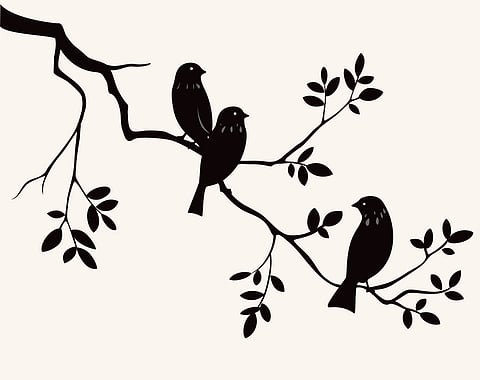

ISTOCK
When you hear the phrase "bird brain," you probably imagine someone forgetful or silly. After all, we often joke about how small birds' brains are. But what if being called a bird brain was actually a compliment? Surprisingly, birds are among the smartest creatures in the animal kingdom. Scientists are discovering that many bird species aren't just clever—they're extraordinary.
If you've ever watched a crow carefully picking apart rubbish bins or a parrot mimicking human words, you've already glimpsed their intelligence. But how smart are birds really, and how can we even measure intelligence in animals so different from ourselves?
Let’s start with crows. Often seen hopping around parks or perched on rooftops, crows might seem ordinary. But these jet-black birds are masters of problem-solving. Researchers have seen crows not just using tools but actually making them. In one famous study, New Caledonian crows used sticks and twigs to dig insects out of tree bark. When a twig wasn't quite the right shape, the crows cleverly bent it to fit their needs—just like we humans might alter a screwdriver or bend a paperclip.
And crows aren't just smart individually—they share knowledge, too. Scientists noticed that when one crow figures out something new, like a safer place to find food, soon the entire crow community knows about it. They pass information along like a chain of gossiping friends, helping each other survive.
But it's not just crows. Parrots, famous for their colourful feathers and ability to speak human languages, show incredible intelligence. One remarkable parrot named Alex amazed scientists with his language and reasoning skills. Alex learned the names of objects, colours, and numbers—and didn't just repeat words, he actually understood them. When researchers showed him two objects and asked questions like, "Which is bigger?" or "What colour is this?" Alex answered correctly nearly every time. He even made up words himself, creatively combining known words when he encountered new objects. Alex wasn't just imitating sounds; he was genuinely thinking.
Then there are pigeons. You might think of pigeons as just ordinary birds, fluttering around city streets, searching for crumbs. But these everyday birds have a powerful skill: amazing navigation abilities. Homing pigeons can find their way home from hundreds of miles away, using a mental map based on landmarks, the sun's position, and even Earth's magnetic fields. Scientists still aren't exactly sure how pigeons achieve this incredible feat, but it proves birds have astonishing skills we don’t fully understand yet.
Even smaller birds, like finches, have extraordinary skills. Zebra finches have amazing memory and music skills—they learn complex songs from older birds. These songs are passed down through generations, just like folk songs or family recipes in human cultures. Each finch adds its own unique twist, keeping the tradition alive and fresh. It’s like bird culture!
So how do these feathered geniuses manage such impressive thinking? Bird brains are smaller than those of mammals like monkeys or dolphins, but they're organised differently. Their brains pack neurons—tiny nerve cells that transmit information—much more densely. Think of it as fitting more computing power into a smaller space, like a very powerful smartphone that's surprisingly compact. This dense arrangement helps birds quickly solve problems, learn new things, and adapt to their environments.
Scientists studying bird intelligence often ask themselves, "Why are these creatures so clever?" One reason might be survival. In the wild, quick thinking can make the difference between dinner and danger. Birds have to solve problems every day—finding food, escaping predators, or building the perfect nest. Their intelligence helps them thrive in changing environments, giving them a strong advantage.
Birds show us that there's more than one way to be smart. Intelligence doesn't always look like solving maths equations or using technology; sometimes, it's bending a twig, finding your way home, or singing a complex tune.
ISTOCK
Pigeons can recognise themselves
They’ve passed the mirror test, a rare sign of self-awareness seen in only a few animals.
ISTOCK
Starlings master human-like grammar
They can recognise patterns in sound sequences, similar to how humans understand sentence structure.
ISTOCK
African grey parrots ask for help
Studies show they can request assistance from humans when faced with problems they can’t solve alone.
ISTOCK
Clark’s nutcrackers never forget
These birds can remember up to 5,000 hidden food spots — even months later.
ISTOCK
New Caledonian crows use tools
They craft hooks from twigs to fish insects out of tree bark, showing planning and problem-solving.
ISTOCK
Kea parrots understand probability
They can make choices based on odds — a skill once thought to be uniquely human.
ISTOCK
Cockatoos can solve puzzles
These birds can unlock multi-step boxes using tools in the correct sequence.
Jays can read thoughts
They hide food differently when they think another bird is watching — a sign of theory of mind.
ISTOCK
Some birds play
Ravens have been seen sliding down snowy roofs or playing catch with sticks — just for fun.